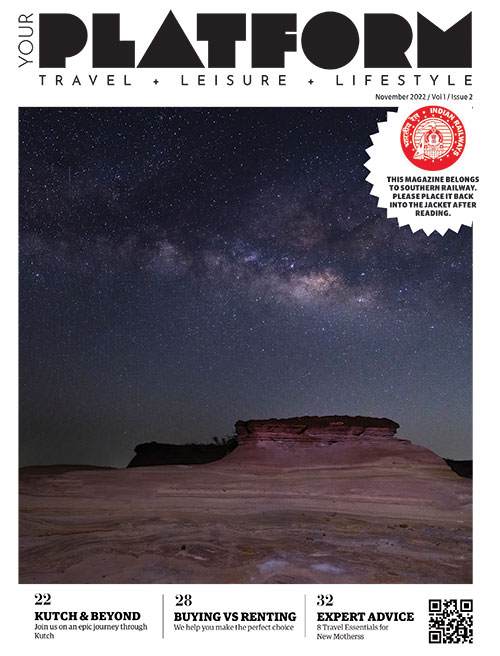Southern Railway’s famed heritage structures and lines
Explore the remarkably famed heritage structures and rail lines fabricated by the Southern Railway of India. These massive structures are standing tall adding meaning and beauty to our nation. Soon after India’s Independence, the Government under took a programme of regrouping the rail system into smaller number of sufficiently large and administratively viable divisions. Thus, Southern Railway became one of the first Railway zones to come into existence on 14th April 1951. It has 6 Divisions located at Chennai, Madurai, Tiruchchirappalli, Salem, Palakkad and Thiruvananthapuram. Southern Railway was formed on 14th April 1951 by merging the Railway systems administered by the erstwhile Madras and Southern Mahratta, South Indian and Mysore State Railways. Subsequently in 1966, with the formation of South Central Railway a portion of Southern Railway was transferred to South Central Railway. Again in 2003 South Western Railway was formed transferring two divisions, viz., Bangalore and Mysore Divisions, from Southern Railway. Now, Southern Railway serves the entire states of Tamil Nadu, Kerala & Pondicherry and a small part of Andhra Pradesh and Karnataka. Important Heritage structures Southern Railway Headquarters A massive Heritage Structure in present day Chennai, the Southern Railway Headquarters building situated next to Chennai Central was designed by N.Grayson, an architect of the erstwhile Madras and Southern Mahratta Railway. The Foundation of the palatial headquarters building was laid on 8 February 1915 by Lord Pentland, the then Governor of Madras. Based on the Dravidian style of classic architecture the foundation of the Indo – Sarcenic type structure consists of a reinforced concrete raft from 5 to 8 feet below the ground level set upon a stratum of pure sand, nearly 20 feet deep. It took nearly 7½ months to lay the foundation structure consisting of 500 tons of steel bars embedded on 10,000 tons of granite concrete. Built of stock brick with Porbundar stone, the central towers rise to a height of 125 feet 6 inches above the roadway. The corner towers house the water tanks with a total capacity of about 35,000 gallons. After nine nine long years of intensive labour and a massive investment of Rs.30,76,400 the building was opened on 11 December 1922 by Lady Willington, the wife of the then Governor of Madras. A Special postal cover marking the launch of Centenary Celebrations of Southern Railway Headquarters was released on 27th January 2022. Dr M.G.Ramachandran Central Railway Station The heritage structure of Dr M.G.Ramachandran Central Railway Station (Erstwhile Chennai Central/ Madras Central) was built in the Romanesque revivalist style with round arched arcading and coloured windows with an imposing roof was originally built by the Old Madras Railway Company and opened on on 7April 1873. Chennai Egmore The Oriental Style of architecture with Mughal style domed towers and minarets have characterized the Heritage Station of Chennai Egmore since its opening in 1908. Royapuram Another historic Railway Structure, the Royapuram Railway Station is the oldest Railway station in the country that still survives, displaying the vestiges of its former splendour. Though India’s first railway line opened from Bori Bunder, Bombay to Thane, neither Bori Bunder nor Thane stations have retained their original structure. The Royapuram Station building, that resembled a regency mansion, was declared open by the then Governor Lord Harris on 28 June 1856. In his speech he congratulated the Madras Railway Company, its Manager Major Jenkins and all who had worked on the railway, Lord Harris said that the project was worth the investment and looked forward to equally expeditious completion of additional miles of track up to the west coast. Two trains, each with coaches made by Simpson & Co., the leading coach builders of the day, inaugurated the service. One carried the Governor and 300 Europeans and another train, with the Indian invitees followed. These were widely covered by the Press. “The Illustrated London News” gave a graphic description of the inaugural train passing across the arid plain of the Carnatic, frightening the herdsmen and the cattle. Kozhikkode The railway line to Calicut (now Kozhikkode) was opened on 2nd January 1888. The station was then the western terminus of Madras Railway. The station houses vintage fixtures such as Railway Institute built by British in 1888 which served as a recreation for employees and a cast iron mechanical pump set imported from England to pump water into steam engines. Kozhikkode railway station celebrated its 125th Anniversary on 2nd January 2013. A special postal cover was released by Kerala Circle in commemoration of the 125th Anniversary of Kozhikkode Railway Station. Nilgiri Mountain Railway The Nilgiri Mountain Railway which was declared as UNESCO World Heritage Site in 2005, is a show-piece of Railway technology using the rack and pinion system. To this day, the Southern Railway maintains this century old Mountain Railway stretch between Mettupalayam – Coonoor – Ooty with great pride and panache. The Great Pamban (old) Bridge Celebrated as one of the iconic structures built in the erstwhile era, the great Pamban cantilever bridge was commissioned in 1914. Bridging peninsular India and the Gulf on Mannar, this vintage structure interconnects Mandapam inRameswaram mainland with Rameswaram Island. Located in the state of Tamilnadu, the bridge falls under the jurisdiction of Madurai division of Southern Railway. The Great Pamban Bridge attracts thousands of tourists from all over the world. Offering a visual feast to the onlookers, the Scherzer rolling spans beautifully expand and allow cruisers and ships to pass through. The bridge transports scores of pilgrims visiting the famed Ramanathaswamy Temple. This century old engineering marvel has stood the test of times amidst highly corrosive seas.









